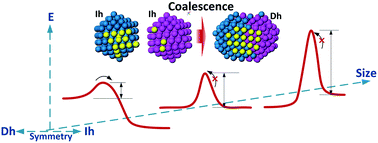Nucleation of decahedral Ag nanocrystals†
Abstract
Via MD simulation, we show that the transition barrier between icosahedral (Ih) and decahedral (Dh) silver clusters increases strongly with cluster size and thus effectively prohibits thermally induced transformation. It is further shown that coalescence of preformed Ih clusters may indeed serve as an effective path for the nucleation of Dh-like multiply twinned nanoparticles.


 Please wait while we load your content...
Please wait while we load your content...